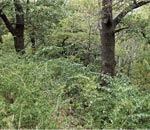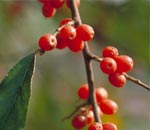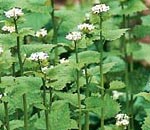The Indiana Natural Heritage Data Center
- About The Indiana Natural Heritage Data Center
- Endangered Plant and Wildlife Species
- High Quality Natural Communities of Indiana
- Invasive Plant Species
But when you're done reading it, click the close button in the corner to dismiss this alert.
Get our latest updates and view what is open, closed and canceled.
Of the more than 2,000 species of vascular plants in Indiana, roughly 25 percent are non-native to Indiana. Most don't create problems in natural areas, but many do, competing with and crowding out more desirable native species.
The Report IN is a regional effort to develop and provide an early detection and rapid response (EDRR) resource for invasive species.
The goal of this regional resource is to assist both experts and citizen scientists in the detection and identification of invasive species in support of the successful management of invasive species.
Examples of non-native plants include:

Bush Honeysuckle

Autumn Olive

Garlic Mustard
A list of invasive exotic plants , found in Indiana natural areas.
The Indiana Invasives Species Council is another source of information on invasive species in Indiana.
Use EDDMaps to report invasive plants in Indiana.
Those organizations that focus a great deal of time, money and effort controlling undesirable non-native and invasive species in natural areas include:
Although many of these detrimental plants are sold in nurseries and planted by people who are generally unaware of the problems they create, there are plenty of native plants that could be used instead for landscaping.
To learn more about alternative native species that can be used in landscaping, as well as, non-native and invasive species, check out the Indiana Native Plant and Wildflower Society website.